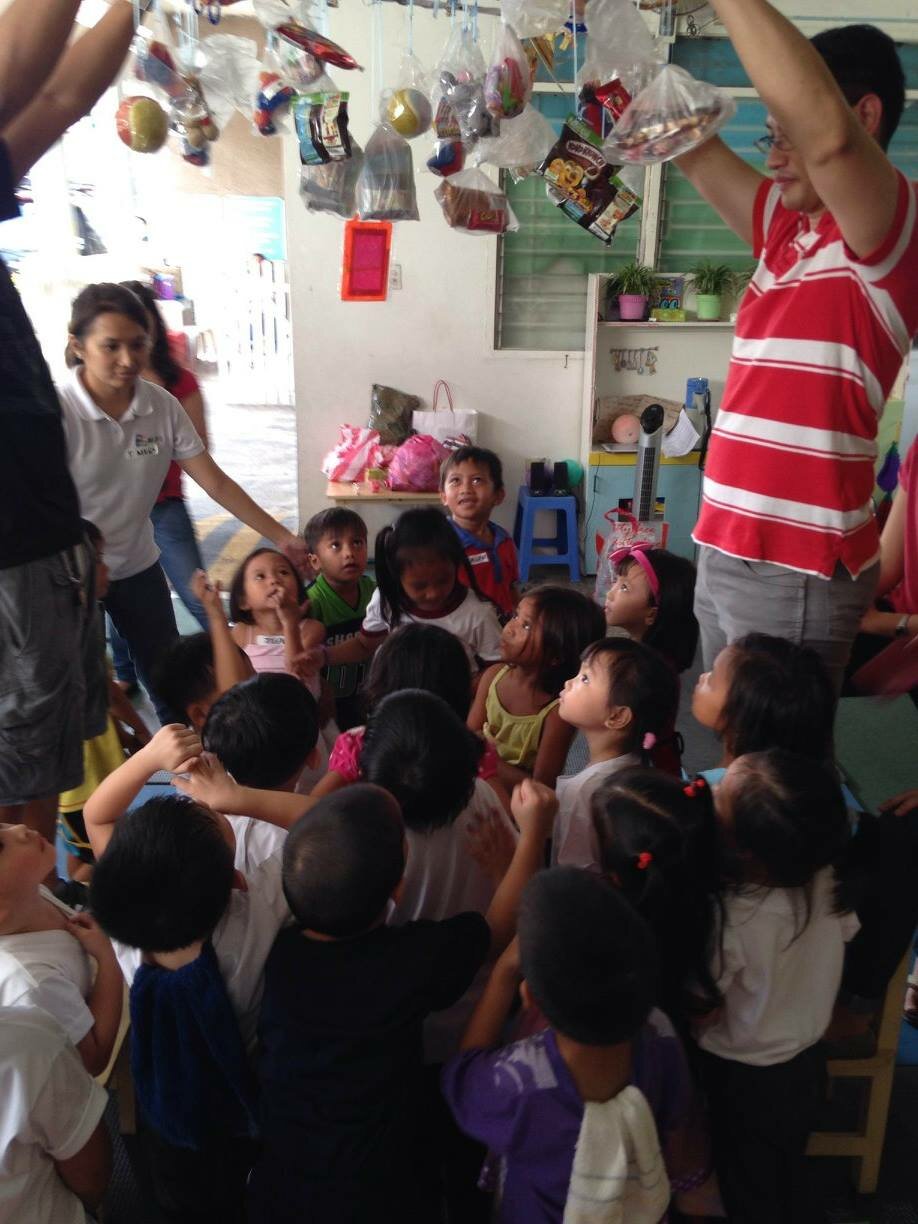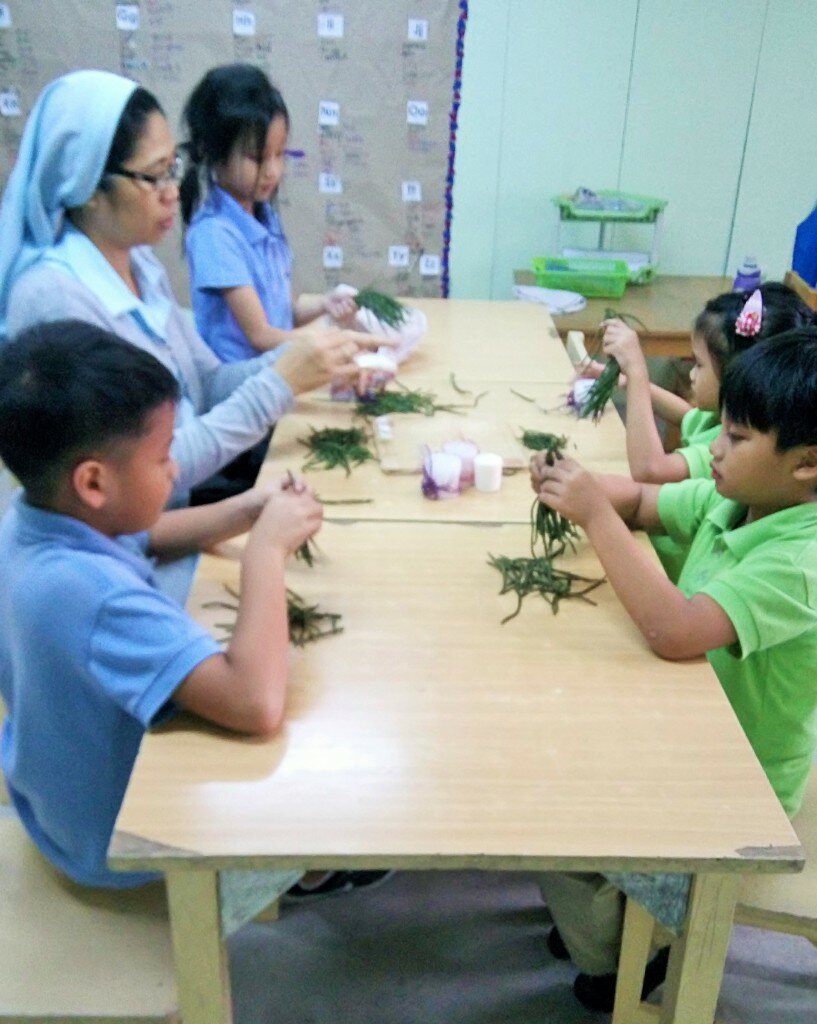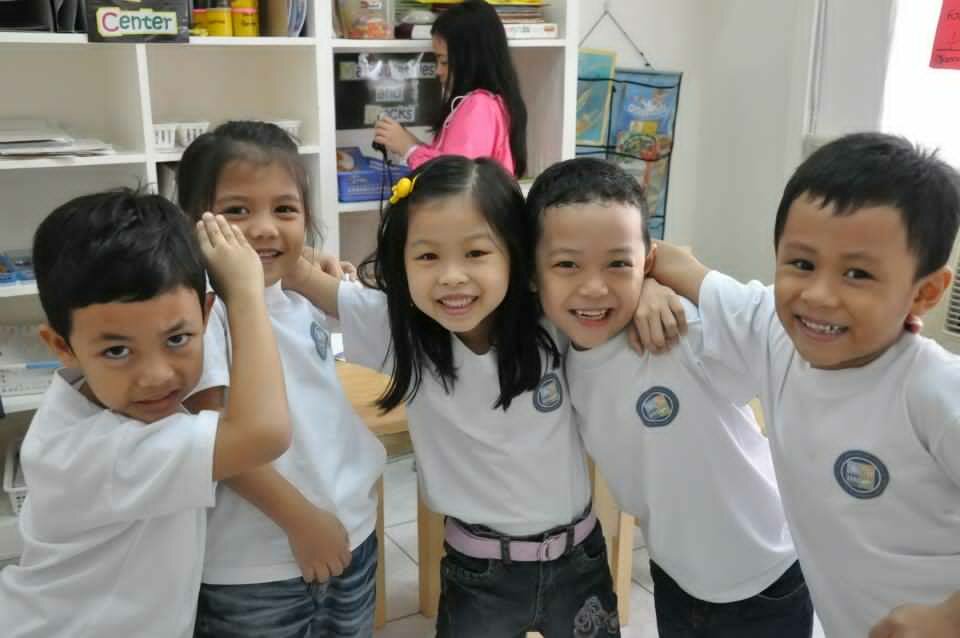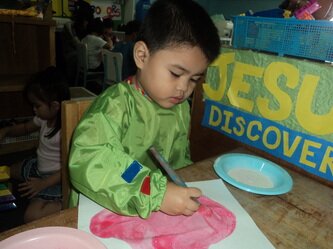One of the things we hope for for our children is that they will grow up as “people for others,” i.e. that they will know how to care for others, not just themselves. We want them to learn how to think of others and extend a helping hand when needed.
It’s a challenging task though — to teach kids to care for others. Thankfully, there are many different ways to do it. Below are just four, as shared by Teacher Cecilia Bautista, directress of Child’s Space, based on what they do in school:
1. Start them young.
“We are committed to equipping our students to be lifelong learners by providing a dynamic, challenging and relevant education,” Teacher Cecilia shares. “We aim to develop competent, strong-willed and responsible members of society.”
Teacher Cecilia says it is important to lay “the foundation of Christian values for children” so they can “mature into compassionate leaders who will transform their love and passion for Christ and His Church by helping his community.”
This can only be done if we — parents and educators alike — start early.
For example, at Child’s Space, all students are involved in the school’s Christmas Outreach, no matter how young they may be.
“While we share our blessings by giving loot bags, food and other donations, our goal is to share our time,” Teacher Cecilia says.
When we allow kids to spend even just a few hours with other children (who are more “needy” than them), we help them to realize that all children are the same; and that every child is special because they are all God’s children.
At the same time, children recognize the many blessings they have been given and are also encouraged to share these blessings with others.
“As they get older,” Teacher Cecilia shares, “they begin to form their own ways of helping/ reaching out. It starts off with awareness, followed by action.”
2. Empower them to serve.
One way to teach kids to care for others is to help them think of projects or activities that will serve others in need.
At Child’s Space, Grade School students are required to come up with 3 community projects within the year.
For example: They do individual projects with their respective families like helping their own metro aide/ garbage collector, sponsoring a child through an NGO, visiting an orphanage and sharing toys, and soliciting diapers for PGH babies.
“This year, we are starting the Charity Tuesday: we pass around cans in the different classes,” Teacher Cecilia shares. “Collections will be donated or used to help someone in need.”
A big event for the Kindergarten students of Child’s Space is their 100 Days in Kinder Project. It is an integrated activity involving math, literacy, etc, which culminates with a food sale (goodies such as cookies, banana cakes, lava cake, pastillas, and drinks made by the kids).
The proceeds of the sale are used to buy gift bags and give cash donations to the school guard and maintenance workers. This is something that other kids can do, whether as a school-initiated project or one initiated at home.
Projects like these teach children that they are responsible for others and that they can do something good, no matter how young they are. This way, kids are empowered to serve others even in small ways.
3. Let them feel that they are cared for too.
We must raise our kids in a caring community — for children to choose to care for others, they must also feel that they are cared for by those around them, especially at home and in school.
“Children can only give what they know,” emphasizes Teacher Cecilia. “We aim for a caring community in school. Activities are done to ensure a sense of caring for one another.”
4. Encourage them to appreciate others and be grateful for them.
Here are some ways to do this:
– Honoring: This is done in Child’s Space, especially in Grade School, where teachers start off each day “honoring” a child, i.e. just sharing some things that s/he is thankful for about him/her. This helps other students see these things too and appreciate one another. (Honoring is also done among the teachers.)
– Hug-A-Friend Day: Hugs go a long way in affirming another person of your care and support.
– Mentorship: At Child’s Space, a teacher is assigned to a child and they have regular chats about different topics.
– Caring Group: At the end of the week, students in the Kinder level and up talk about their blessings for the week, and even their struggles, if any. Teachers can then pray for the students.
To end, Teacher Cecilia encourages parents and other caregivers of children to model caring for others at home and elsewhere.
“In a progressive school, and particularly in our school, I want to stress on how important families are,” she explains. “Their involvement is critical but we do understand that they cannot be in every event all the time. Their trust in us, and their support of our endeavors in their own homes, will truly make a difference in developing caring children.”
So, whether or not your kids go to a school like Child’s Space, it’s important to remember that when we teach kids to care for others, everything starts with us adults. We must set an example for them, and encourage them at all times to be kind and caring.
How do YOU teach kids to care for others? Share your suggestions below in the comments!
*****
*This post is brought to you by Child’s Space. If you’re interested in a caring environment for your child, especially this summer, check out their Summer Classes by visiting or calling them via / . You can also visit their website here.















